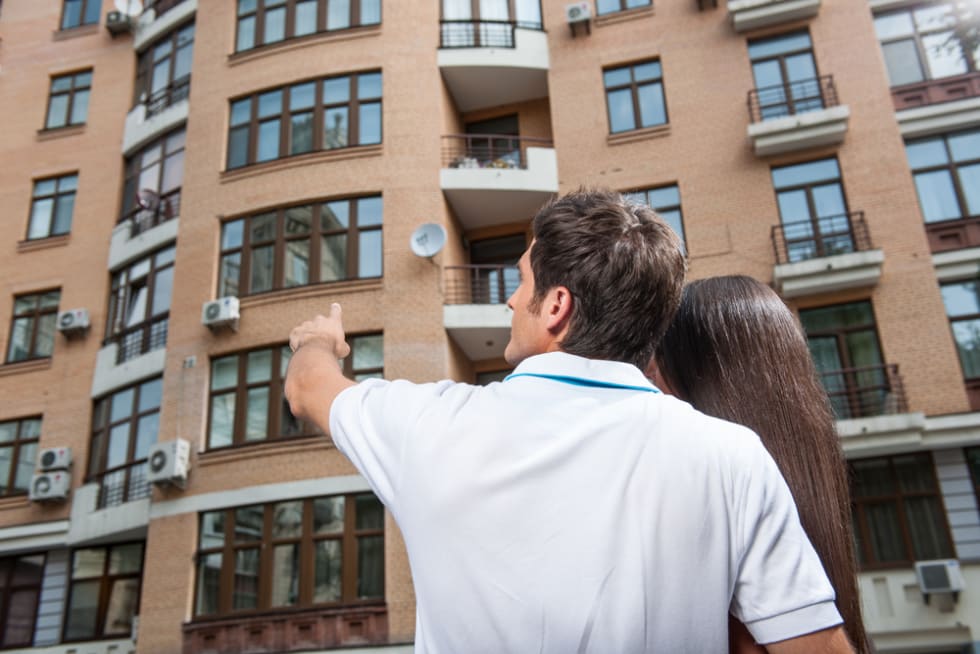Preston Centre
- 43 units available
- 1 bed • 2 bed • 3 bed
- Amenities
In unit laundry, Hardwood floors, Dishwasher, 24hr maintenance, Stainless steel, Walk in closets + more

If you're struggling to afford rent, you're not alone. Research indicates that 49% of Americans consider the availability of affordable housing in their local community a significant problem.
Relief could be within reach! Some programs, including low-income and affordable housing, could help you pay your rent without feeling financially burdened. This guide explains each option, who qualifies, how to apply, and where to find additional resources.
Low-income housing is a broad term referring to any housing where rent is affordable to households earning less than 80% of the area median income (AMI) in their region. This includes public housing programs like Section 8. Under these programs, the government pays a portion of the rent, allowing families, seniors, people with disabilities, and individuals with low incomes to stabilize their livelihoods.
Key Characteristics:
Affordable housing is defined as when a tenant is paying no more than 30% of their income on rent. In order to secure affordable housing, a household must meet specific local income limits. (Side note: No matter what your income, it’s always a good idea to spend less than 30% of your income on rent.)
Some affordable housing programs incentivize developers to create a specific number of rentals below market value. The developer receives tax credits to help offset their project costs.
Key Characteristics

Although low-income and affordable housing sound the same, there are critical differences in these income-restricted programs.
Low-Income Housing
Low-income housing requires qualifying through your local housing authority. Here are some factors to consider:
Affordable Housing
Learn about some of the criteria and key factors of affordable housing:
| Low-Income vs. Affordable Housing | ||
|---|---|---|
| Low-Income Housing | Affordable Housing | |
| Definition | Subsidized housing for those earning <80% of the AMI | Housing that costs <30% of household income |
| Eligibility | Based on HUD income limits, strict verification | Broader, may include middle-income renters |
| Administered By | Local HUD-funded PHAs, plus some private landlords | Private developers, plus local and/or state incentives |
| Programs | Section 8 vouchers, other HUD subsidies | LIHTC (Section 42), developer tax credit units |
| Who It Serves | Very low-income families, seniors, individuals with disabilities | Low- to middle-income renters |
| Purpose | Ensure safe, subsidized rentals | Expand access to below-market housing |
| Availability | Limited, long waitlists | Varies by region; more dispersed |
Low-income housing has many pros, including fewer evictions and a path out of homelessness. Programs like public housing can also help ease poverty. When tenants pay below-market value for rent, they can save more, stay healthier, and put more spending money back into their community.
These programs must adhere to safety and property maintenance, and most have 24-hour security and video surveillance. Depending on the area, low-income housing may also lead to lower rents in its surrounding community.
Some say low-income housing burdens taxpayers and diverts resources from other community projects. Additionally, living in low-income housing can often be an isolating experience. These buildings are typically found in high concentrations in specific parts of a city, which limits daily interaction with the broader community.
Despite the safety precautions in low-income housing communities, many are still considered dangerous. Crime rates are often higher in areas with public housing, and residents frequently face social stigma as a result. There are also frequent accounts suggesting that buildings are not maintained to the required standards.
Despite its drawbacks, low-income housing still has a long waitlist, leaving many people vulnerable while they await accommodations.
There are many pros to affordable housing, starting with its distribution. Private landlords can accept housing vouchers, which can help reduce overcrowding in specific areas.
Developers who take advantage of affordable housing incentives can also help reduce overcrowding. For example, instead of concentrating their apartment and housing development in just one area, they can build in multiple neighborhoods.
The arrival of both low-income and affordable housing also stimulates job growth. As a result, more people take jobs that they may not have been able to do otherwise due to high rents. In addition, there are fewer evictions in affordable housing, and renters have more disposable income to spend in their communities.
There may be pushback in communities about affordable housing, as some argue that charging less than market value will slow revitalization efforts. But, like public housing, affordable housing programs have long waitlists and are income-restricted. So, as you earn more, you may need to find a new place to live.
Developers participating in affordable housing incentives usually only receive tax credits for up to 10 years. The developer may decide to dispose of their affordable housing units after this period by selling the building or converting the units into condominiums for sale.

Section 8 is an out-of-date name for a public housing program now officially called the Housing Choice Voucher (HCV) Program. It requires tenants to pay a minimum of 28% of their income toward their rent, with the government then paying the remainder of the rent directly to a private landlord in the form of vouchers.
Despite the differences in how rent is paid, landlords still screen prospective tenants the same way as other applicants. Tenants also sign a lease agreement, just like other renters.
Section 42, or the Low-Income Housing Tax Credit (LIHTC) program, encourages low-income rental housing for those who qualify based on income. Developers and investors who offer low-income rentals receive tax credits and other incentives.
Some of the units in the development can be rented at market value or above. However, a specific number of units must remain available for low-income renters for developers to continue claiming their credit.
Public housing, housing vouchers, Section 8, Section 42, and nearly all income-restricted housing programs require an application process. Here's how to get started.
Learn Your Local Income Guidelines
The income guidelines for public housing and affordable housing may vary depending on your area. Learn more about income-restricted programs’ housing eligibility requirements by visiting the HUD website.
Get in Touch with Your Local PHA
After determining your guidelines and eligibility, contact your local public housing authority (PHA) to submit your application. The local PHA will help you determine your approximate rental costs, the size of apartment you could qualify for, and guide you through the types of rentals available.
Fill Out an Application for the Program
You can apply for government-owned apartments and related programs through your local PHA. However, you will need to apply directly with the landlord for privately owned properties qualifying for low-income and affordable housing.
If you plan to live with a significant other, family member, or friend, they will also need to qualify for income-restricted housing. Additionally, background checks will be conducted, which may disqualify renters in certain areas from income-restricted housing.
Collect Your Documentation and Proof
Applicants are required to provide documentation, including their verified income. This rule extends to everyone living in your household, including roommates. All adults are also required to provide government-issued identification and birth certificates for any children accompanying them.
Get on the Waitlist
Waitlists are the norm with income-restricted housing. These programs are highly competitive and attract a large number of applicants. Try to remain open-minded about the type of apartment you receive and stay as flexible as possible to keep the process moving smoothly.
Keep Your PHA Updated with Any Income Changes
Careers and income change, so make sure you stay on top of your application. In addition, you must keep your PHA updated with any income changes, both during the waiting process and after you move into your affordable or public housing rental.
It could also benefit you to report income changes. For example, you might need to pay more for rent if you earn a higher income, but you’re likely to stay in your current rental. However, earning less means you’ll have more assistance and cheaper rent.
Affordable apartments are within reach, provided your income qualifies. But, of course, waitlists and limited housing inventory are issues in many cities.
To start searching for affordable apartments now, try the Apartment List quiz and narrow your filters to find options in your area. With us, you’ll spend five minutes and save 50 hours searching.

Unfortunately, there’s no way to get Section 8 immediately. Most cities have long waitlists; however, contacting multiple public housing authorities (PHAs) may increase your chances of being selected.
HUD defines low income as earning less than 80% of the area median income (AMI) for your region.
Low-income housing is often referred to as income-restricted housing, subsidized housing, or public housing.
Households that spend more than 30% of their income on rent and meet local income limits may qualify for affordable housing programs.
Critics argue that affordable housing can face community pushback, reduce tax revenues, or lead to funding challenges, though research shows it often strengthens communities overall.
In New York City, one of the nation’s most expensive regions, low-income housing includes options like New York City Housing Authority (NYCHA) units, Section 8 vouchers, and income-restricted apartments.
Affordable housing is typically funded through a mix of federal, state, and local government subsidies, as well as private developer tax credits.


In unit laundry, Hardwood floors, Dishwasher, 24hr maintenance, Stainless steel, Walk in closets + more
In unit laundry, Patio / balcony, Granite counters, Pet friendly, Stainless steel, Walk in closets + more